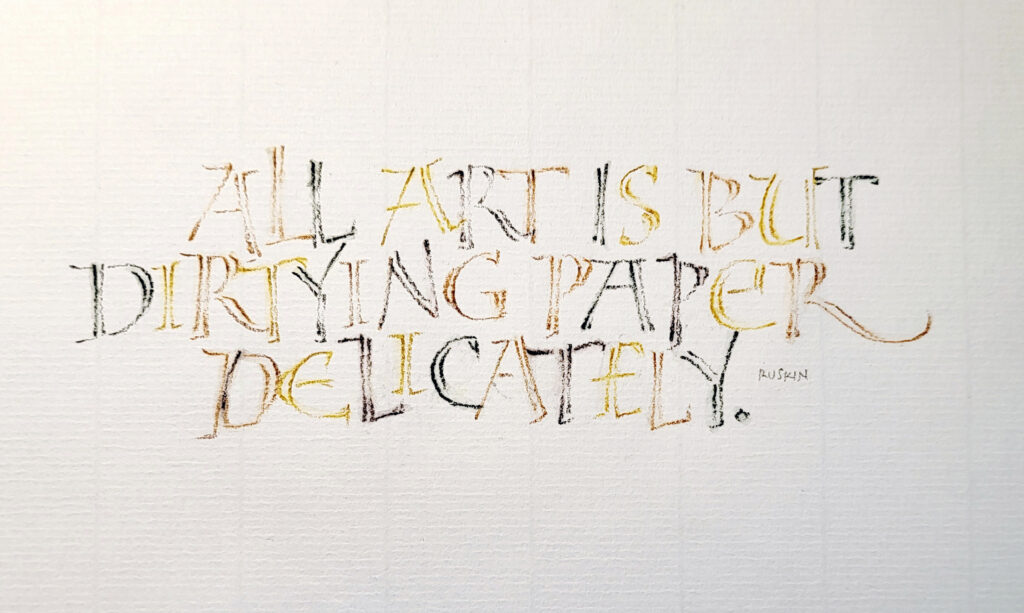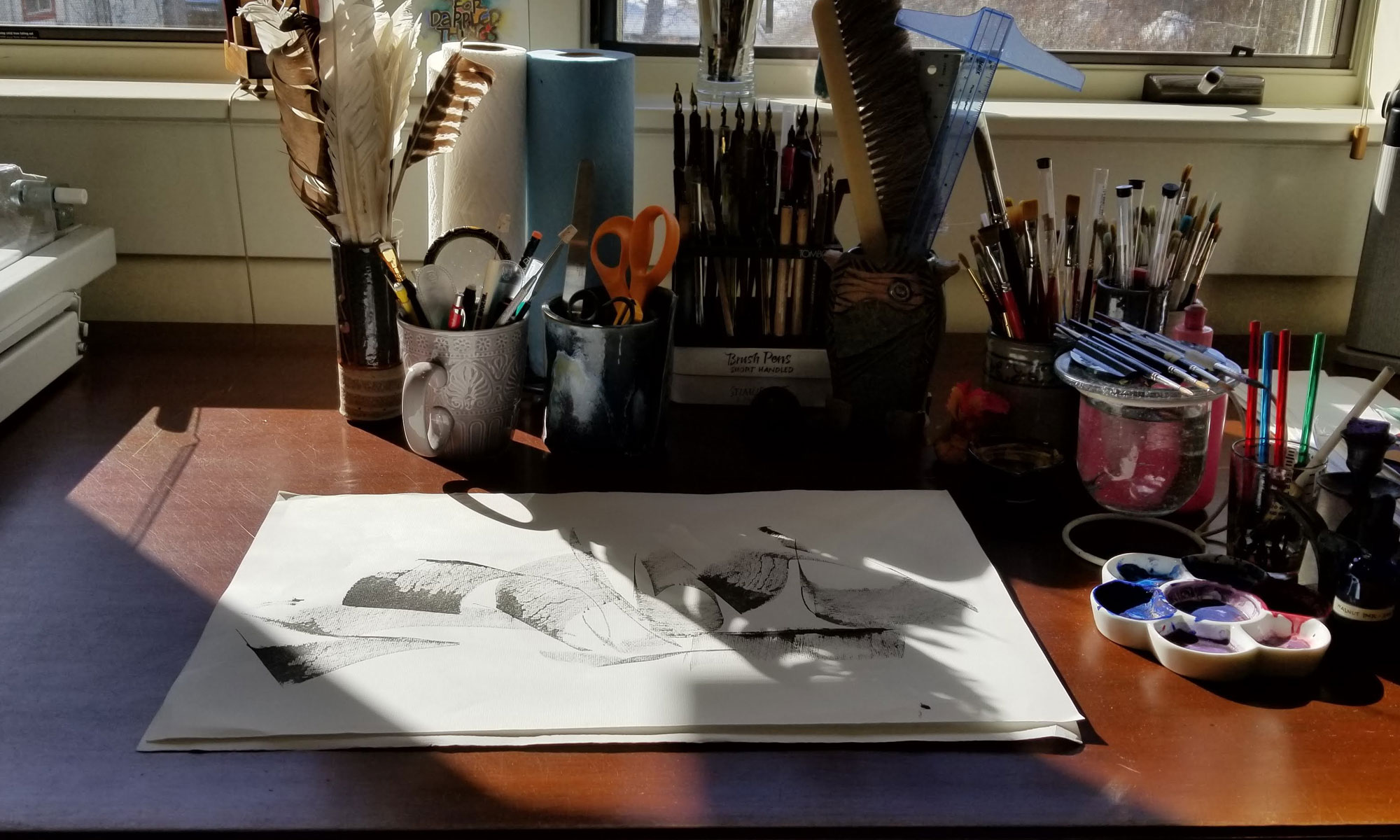
The shop is hopping!
Later I’ll discourse at length on a philosophy of learning, but first: There’s a lot going on in the studio! But I have very little to show here. Nearly all of my recent work has been commissioned for weddings and other occasions. I’ve also updating the workshops I will teach this summer and fall.
In the past few weeks, I’ve completed a ketubah with watercolored maple trees, a Quaker-style marriage certificate (on mat board, unusually), place cards, menus, chopstick tags, invitation addresses, and more. And I’ve been developing new handouts for my updated “Ben Shahn-ish” workshop.
How we learn
I often use the pages of my daily journal to determine lengths, plan layouts, and explore scripts and script variations. When sharing my daily journal with my (awesome!) critique group last week, someone asked me how I switch so easily between calligraphy hands. I didn’t have an answer then, but I’ve been thinking about the question a lot.
It has something to do the way we learn. I vaguely remember that the ancient Greek philosophy of education asserted that when we learn one subject, we apply that learning to the next subject we learn, and we also learn how to learn, and so on. I think it’s called constructivism in modern jargon.
It’s all coming together
So when I first learned Edward Johnston’s foundational hand, I learned to analyze shape and spacing. Later, I learned pointed pen lettering and the important kinetics of pressure-and-release and gestural writing. When, much later, I circled back around to bookhand, that learning gave me the tools to do the pressure and manipulation required for a nuanced bookhand such as Civilité or those taught by Elmo van Slingerland. That’s just one example.
My point is that, after a mere 40 years of lettering, the disparate disciplines have come together for me, both intellectually and kinetically. Every hand has its mix of shape, counter-shape, gesture, tempo, rubato, pressure, nuance, and more. At this point, to sit and write in an italic hand and then switch to an uncial hand is, at its simplest, a matter of changing up the combination of these elements.
… except when it’s not, of course
This is not to say that I can perfectly render every hand at any time. Not at all! To write my very best bookhand, for instance, I’d need to write a lot of bookhand for several weeks. And I’d have to write with focused intention. This is true for just about any hand. And it’s true for broad-edge pens, pencils, and pointed pens. (I’m least tutored in the latter). The brush lettering is creeping its way into the tent, though I may not live long enough for the brush to join the other tools fully.
This is how I feel today. Tomorrow, I may sit down at the desk that my great-grandfather built for his son, the desk I’ve sat at for the past several decades, and find that I know nothing whatsoever about lettering. It has happened often enough now that I know to expect it.
